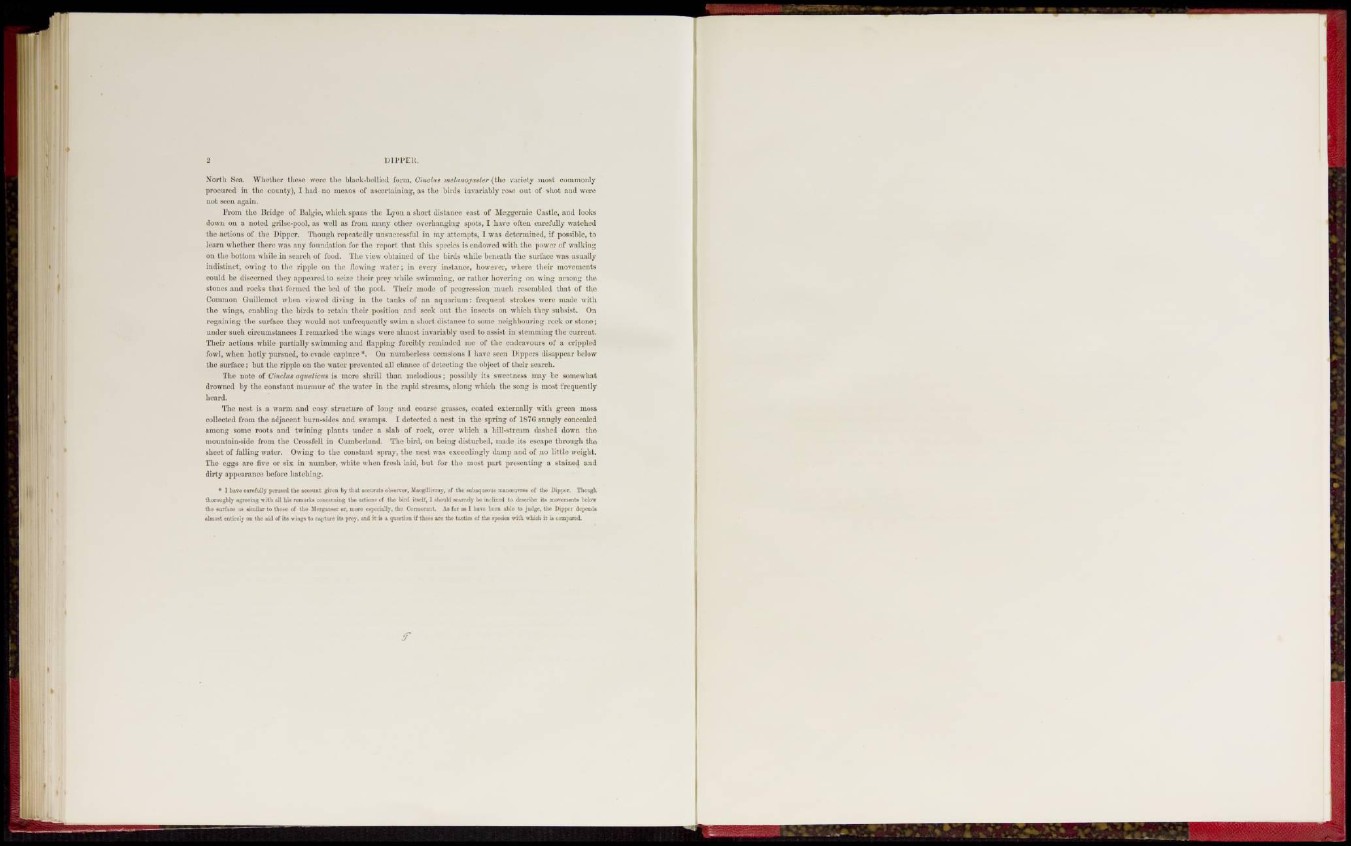
2 DIPPER.
North Sea. Whether these were the black-bellied, farm, Oiuc/'f M:,t'tiw;>ti#/t,r (the variety most commonly
procured in the county), I had no means of ascertaining, as the birds invariably rose out of shot and were
not seen again.
Prom the Bridge of B.ilgie, which spaas the Lyon a short distance east of M.eggornie Castle, and looks
down on a noted grilse-pool, as well as from many other overhanging spols, I have often carefully watched
the actions of the Dipper. Though repeatedly unsuccessful in my attempts, I was determined, if possible, to
learn whether there was any foundation for the report that Ibis species is endowed with the power of walking
on the bottom while in search of food. The view obtained of the birds while beneath the surface was usually
indistinct, owing lo the ripple on the flowing water; in every instance, however, where their movements
could be diseeroeil Ihey appeared to seize their prey while swimming, or rather hovering on wing among the
stones and roeks that formed the bed of the pool. Their mode of progression much resembled that of the
Common Guillemot when viewed diving in the tauks of an aquarium: frequent strokes were made with
the wings, enabling the birds to retain their position and seek out the insects on which they subsist. On
regaining the surface they would not unfrequeutly swim a short distance to seine neighbouring rock or stone;
under such circumstances I remarked the wings were almost invariably used to assist in stemming the current.
Their actions while partially swimming and Happing forcibly reruiuded me of the endeavours of a crippled
fowl, when hotly pursued, to evade capture*. On numberless occasions I have seen Dippers disappear below
the surface ; but the ripple on the water prevented all chance of detecting the object of their search.
The note of Cindiis aquatictta is more shrill than melodious; possibly its sweetness may be somewhat
drowned by the constant murmur of the water in the rapid streams, along which the song is most frequently
The nest is a warm and cosy structure of long and coarse grasses, coated externally with green moss
collected from the adjacent burn-sides and swamps. T detected a nest in the spring of IsTli snugly concealed
among some roots and twining plants under a slab of rock, over which a hill-stream dashed down the
uiouutaiu-sido from the Crossfell in Cumberland. The bird, on being disturbed, made its escape through the
sheet of falling water. Owing to the constant spray, the nest was exceedingly damp and of no little weight.
The eggs arc five or six in number, white when fresh laid, but for the most part presenting a stained and
dirty appearance before hatching.
• I hivo carefully perused (he account gi.en by (bat •tswsis observer, Uaogillivray, of tht subaqinsula manojuvres of the Hipper. Though
thoroughly agreeing with all his remarks concerning (he action- pf the bird itself, I should scarcely be inclined to describe itn movements below
MM surface us similar to llioro o[ the IbfpMsr or, more imperially, Ihc Cormorant. As fat as I bate been able lo judge, the Dipper dipemla
•hSSSl entirely on the aid ofits iti'ifri lo capture US pny. :in,l it is a ipii.tiun if these are the tactics of the socdes with winch it is compared.